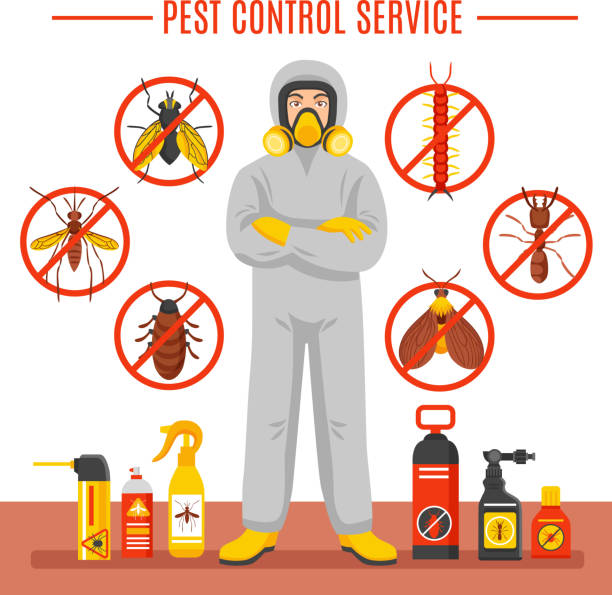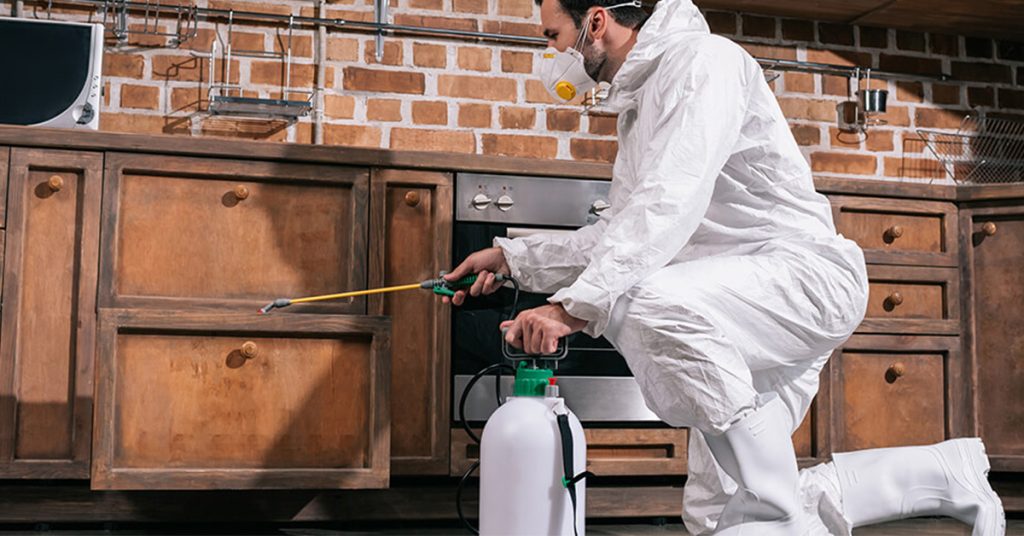Why Homeowners Rely on Pest Control Lockhart for Their Needs
Why Homeowners Rely on Pest Control Lockhart for Their Needs
Blog Article
Discovering Invasion and Therapy Techniques in the World of Bug Control
The landscape of insect control incorporates a myriad of obstacles, particularly as problems of usual family bugs remain to evolve. Recognizing the behaviors and reproductive patterns of these nuisances is essential for creating effective therapy methods. By incorporating safety nets with innovative administration methods, such as Integrated Pest Management (IPM), home owners can much better safeguard their settings. However, the performance of these methods may differ dramatically based upon particular scenarios. What hidden aspects add to the success or failure of these strategies in different setups?

Usual Household Pests
When it involves managing our living spaces, understanding common household pests is vital. These insects not only interrupt our convenience however can additionally pose health risks and damages residential property. The most widespread home pests consist of ants, cockroaches, rats, termites, and bed bugs.
Ants, often seen foraging in kitchens, can pollute food and establish huge nests. Rodents, consisting of computer mice and rats, can cause architectural damages and bring diseases like hantavirus and salmonella.
Acknowledging the indications of these parasites, such as droppings, nests, or bite marks, is vital for early treatment (Pest Control Lockhart). Correct sanitation methods, securing access factors, and maintaining a clutter-free atmosphere work preventative actions. By identifying these typical family bugs and understanding their actions, home owners can take aggressive actions to reduce problems, ensuring a much healthier living setting
Recognizing Parasite Infestations
Pest infestations can rise quickly, transforming a minor annoyance into a considerable trouble if not resolved immediately. Common aspects adding to problems include poor cleanliness, architectural susceptabilities, and seasonal changes that drive bugs indoors.
Identifying the kind of parasite is vital, as various varieties show different actions and reproductive prices. As an example, rats might establish nests in concealed areas while pests like cockroaches thrive in moist environments. Early detection frequently depends upon identifying signs such as droppings, munch marks, or unusual noises, which can indicate an issue before it comes to be serious.
Cozy, humid environments can help with the fast growth of parasite populations, while modifications in landscaping or construction can inadvertently create conducive environments. An enlightened method to comprehending these characteristics lays the foundation for efficient bug management approaches in the future.
Treatment Techniques and Strategies
Reliable treatment methods and methods are essential for alleviating parasite infestations and restoring a safe setting. A multifaceted strategy is typically best, incorporating chemical, biological, and mechanical approaches customized to the details insect and the seriousness of the problem.
Chemical therapies consist of the use of pesticides and herbicides, which can efficiently eliminate parasites. Appropriate application and adherence to security guidelines are essential to reduce risks to humans and non-target organisms. Integrated Parasite Administration (IPM) motivates the sensible use chemicals as a last resource, counting rather on monitoring and threshold degrees to figure out intervention needs.
Organic control methods include presenting all-natural killers or bloodsuckers to lower pest populaces. This strategy is significantly preferred, particularly in agricultural settings, as it promotes ecological sustainability.
Mechanical methods, such as catches and barriers, give immediate relief from parasites without presenting chemicals. Options include sticky catches for pests or physical obstacles for rodents.
Eventually, the choice of therapy technique should consider the certain insect, the atmosphere, and possible effects on human health and communities. A balanced mix of these approaches can properly manage problems while promoting lasting pest control remedies.
Preventative Procedures for House
Proactively resolving pest problems prior to they rise is crucial for maintaining a healthy home environment (Pest Control Lockhart). Implementing effective preventative steps can significantly reduce the probability of invasions, inevitably safeguarding both Recommended Site your home and well-being

Appropriate landscape design also plays an essential duty in prevention. Keeping bushes and trees trimmed away from the house decreases the possibilities of pests finding their means inside your home. Ensure that drainage systems are functioning effectively to avoid standing water, which can draw in insects and various other pests.
Finally, regular inspections are recommended. Consistently examining for indications of bug task enables very early treatment. By adopting these safety nets, homeowners can produce an atmosphere that is much less welcoming to insects, therefore enhancing their total lifestyle and minimizing the demand for substantial bug control interventions.
Commercial Insect Control Methods
A detailed strategy to commercial insect control is important Click This Link for services intending to preserve a safe and sanitary environment. Effective approaches involve a combination of routine examinations, worker training, and the execution of Integrated Parasite Management (IPM) techniques.
Normal examinations allow early detection of bug task, permitting for timely treatment. Companies should create a regular timetable for these assessments, concentrating on high-risk areas such as kitchens, storeroom, and garbage disposal websites. Staff member training is just as essential; staff this contact form needs to be informed on the indications of bug invasions and the relevance of reporting them promptly.
Applying IPM methods aids mitigate parasite issues sustainably. This consists of environment alteration, such as sealing entrance points and minimizing mess, as well as employing all-natural deterrents prior to turning to chemical therapies.

Furthermore, working together with an accredited bug control company ensures access to expert expertise and innovative treatment choices. This partnership can bring about tailored bug control prepares tailored to the certain needs of the organization, lessening threats and enhancing total efficacy. Ultimately, a proactive and educated method cultivates a pest-free environment, protecting both public health and service credibility.
Final Thought
In verdict, efficient insect control demands a thorough understanding of usual family pests and their habits, coupled with targeted therapy techniques. Carrying out preventive actions together with therapy techniques such as Integrated Insect Administration and organic control improves the capacity to mitigate invasions.
Report this page